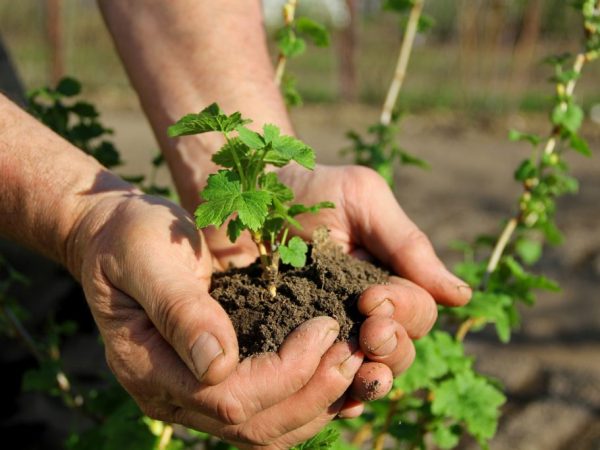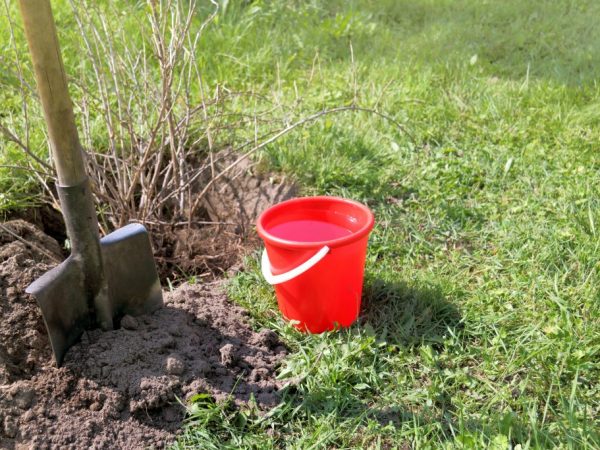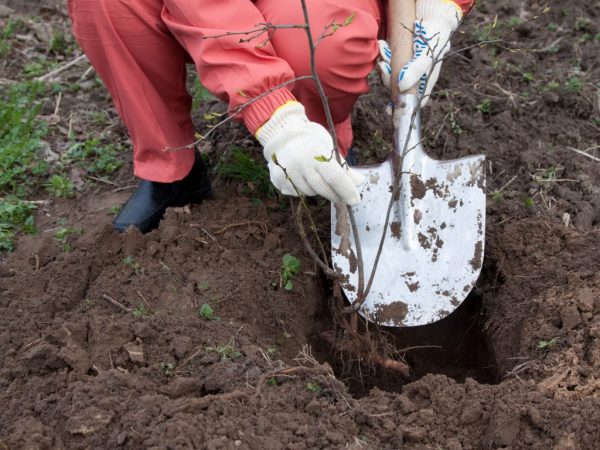Autumn currant transplant - technique and features
Transplanting currants to a new place in the fall can be surprisingly difficult if you do not know a few gardeners' secrets. In order for the bushes to grow luxuriantly and give a large harvest of delicious berries, it is necessary not only to correctly move the plant, but also to take care of it after the procedure.

Autumn currant transplant - technique and features
Autumn transplant conditions
In cold regions, a transplant is planned in the spring, so that the plant has time to adapt to a new place. The movement is carried out at above-zero temperature, when the ground has thawed a little, and return frosts are not expected. If the currant has already begun to grow, then it is better to transplant it next year.
In warm regions, you can replant the bush in the fall. The procedures at this time are more energy-consuming and require patience.
It is important to choose the right moment to move the bush, otherwise it will “mix up” the seasons and weaken. And this, in turn, will adversely affect the harvest.
Timing
To reduce stress for the bush and perform manipulations as painlessly as possible, transplantation should be carried out:
- 2-3 weeks before the onset of frost;
- after a complete stop of the movement of the plant sap;
- after setting stable cool weather without thaws.
For each region, there are approximate terms of the procedure:
| Region / Oblast | When do they start | Deadline |
| Moscow suburbs | October | The beginning of November |
| Leningrad region | Mid september | End of october |
| Ural, Siberia | End of August | Mid september |
| Southern regions | Mid october | End of November |
Lunar calendar
Planning the transplant of currants according to the lunar calendar allows you to increase the rooting rate in a new place.
The celestial satellite affects not only the human biorhythms and tides, but also the sap flow of the bush:
- New moon and 3 subsequent days are considered an unfavorable time for gardening. The sap moves up, which is good for the ripening of the crop, but bad for the survival of the plant.
- The growing moon has a beneficial effect on the bush. While she is in the sky, you can safely transplant currants.
- On a full moon, it is recommended to refrain from such procedures. Fertilization, weeding, and disease prevention will go well.
- With a waning moon, sap flow rushes to the roots, so you should not dig up a plant from a past place.
As you can see, the best time for a transplant is considered to be the growth of the moon. In extreme cases, it is allowed to move currants on a full moon.
Stages of the procedure
Seat selection

Currant loves sunlight
You cannot transplant currants in the first place you like - further life and the amount of harvest that can be obtained from it depends on it. It is worth looking out in advance for the ideal site to place the plant.
Good location options:
- There is practically no shadow. Currants, both black and red, are very fond of the sun.With a lack of direct sunlight, she will feel worse, her immunity and resistance to parasitic attacks will decrease. With a lot of shading, fungal diseases appear within 14-20 days after transplantation. Therefore, when looking for a place, pay attention to how well lit it is.
- Little water. The currant root system prefers moderate watering and does not feel well with excessive moisture. When the soil is swamped, the roots quickly begin to rot, and when there is a lack of moisture, they dry out. It is necessary to choose a moderately moist soil.
- Between the bushes, they keep from 100 to 200 cm to prevent disease epidemics. For many parasites, currants are a tasty catch. Its foliage is extremely susceptible to fungal diseases, which is why one should refrain from making complex compositions with this plant.
Soil preparation
The soil is dug up and disinfected 2 weeks before transplanting, get rid of the remnants of old roots, debris and weeds. For 5-7 days, organic or mineral fertilizers are applied to accelerate the adaptation of the shrub. Gardeners recommend top dressing that guarantees a long-term effect.
The landing pit is small: the depth is from 30 to 40 cm, the planting pattern is 40x50 cm.
Further, the grooves are filled with a nutrient substrate, which you can prepare yourself. To do this, mix:
- humus and compost in equal portions;
- wood ash or 30 g of potassium sulfate;
- 40 g superphosphate.
The substrate is placed in a pit, but not tamped: currants prefer loose soil.
To improve growth conditions, gardeners recommend digging deeper planting holes and filling them with 5-7 cm of crushed stone and 15-20 cm of sand.
Bush preparation
It is necessary to make sure that the flow of sap is stopped at the bush: all branches should be of approximately the same color and hardness, and the plant has no foliage.
Young shrubs are additionally pruned so that they are no more than 45 cm tall. This cutting helps the root system to nourish the branches even under changed conditions. For adult currants, pruning is done after moving.
The bush is examined for diseases and pests. Only a healthy plant can be transplanted, otherwise it will not take root and may infect other plantings.
The displaced shrub is watered and after 2-3 hours it is dug in 50-60 cm in diameter from the central shoot. To do this, they pierce the ground with sharp shoulder blades around the circumference to cut the roots, and then carefully dig in. The more earthen coma remains, the easier the currants will take root in a new place.
Transfer

Only healthy plants are transplanted
The root collar is deepened by 7-10 cm for further root growth and stronger rooting.
Planting for standard and ordinary shrubs is somewhat different:
- Traditional shrubs are planted at a 45 ° angle to the ground. The side of the slope is irrelevant. The next season, the currants will give a new shoot and quickly spread out in breadth, rooting.
- Standard plants are recommended to be planted vertically so as not to cut the shrub again in the future.
The root system is covered with earth and spilled abundantly. When the neck is exposed and when the soil subsides, it is necessary to cover it with additional portions of earth.
Additional recommendations
- Before planting, it is recommended to shed 1-2 liters of water in the wells to sufficiently moisten the soil.
- Dividing a bush for its reproduction is not encouraged, since it injures the plant. As a result, both parts may not take root.
- The red variety survives movement worse in the fall than the black one.
- If the currant is weakened, then it is better to transplant it in the spring (autumn transplantation is allowed only when the shrub is suppressed at the same place of growth).
- For adults and old bushes, transplanting is more traumatic than for young ones. They need more care and care when moving.
- If the plant has dropped its foliage earlier than usual, then it is better not to move it this season.After the procedure, it can give new kidneys, which then freeze and fall off. This is a terrible blow to the health of the bush.
White, red, burgundy and black berries behave in about the same way. However, it is recommended to move early varieties in the fall so that they have time to take root and give a harvest the next year. For the winter, they must be covered, even if the weather is mild.
Follow-up care
It is not enough to plant a bush, it still needs to be helped to take root and take root in another place. For this:
- After transplanting, the shoots of the plant are immediately cut off. Traditionally, 2/3 of their length is left. Even if you cut a little more, then next spring the currants will completely grow the cut off part.
- Watering needs frequent, some gardeners advise to arrange a real "swamp" under the roots of the bush for 1-2 weeks.
- As soon as the time for abundant watering has ended, the plant is insulated for the winter. Methods vary: some use mulching and burlap, others shower the bushes with compost and fallen leaves. At the same time, the survival rate of currants in a new place is good in any way.
A full harvest can be expected next summer, but only if agricultural technology is followed.


